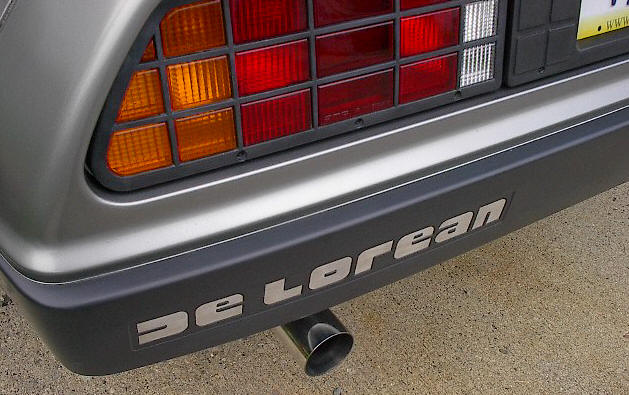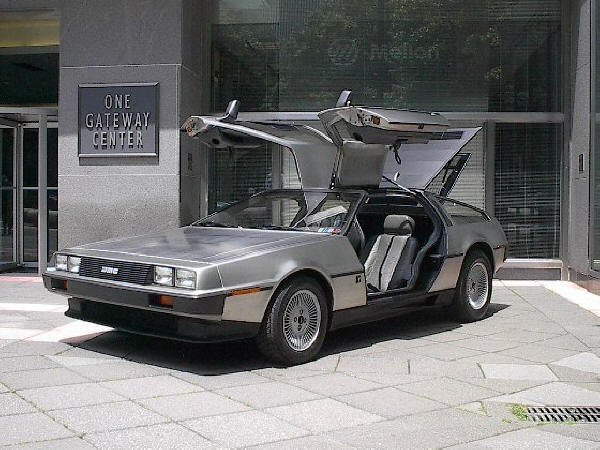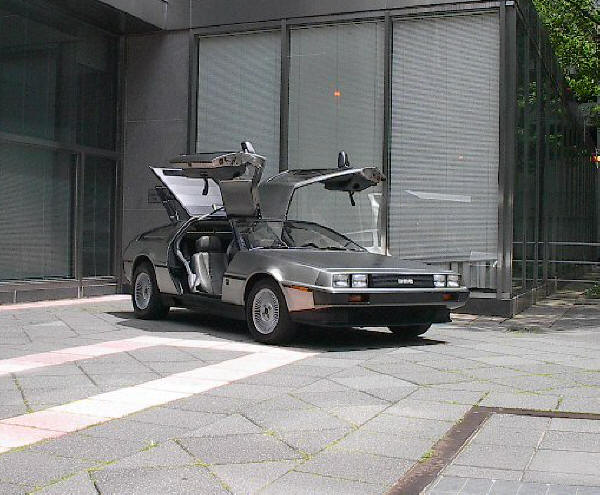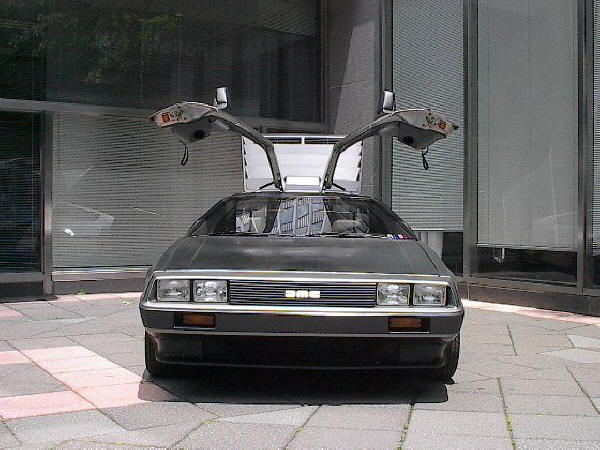|
The Resurrection of Vixen Concludes...

As time went on and Pigeon Forge got closer, my
emotions swung wildly. At times, I was incredibly anxious to get the
car finished & on the road, but at other times I was afraid to even back
the car out of the garage. I guess that’s a normal reaction to any long
project that’s nearing its end, but I had to face my fears and simply
drive. After all, Pigeon Forge was 500 miles away, and the longest trip
we had taken to date was only 11 miles. We needed to do some serious
breaking-in before we attempted the trip. Juley practically dragged me
to the car each day to get as much “road time” in as possible before we
left.
All of the shakedown drives went flawlessly, but somehow that worried me
even more. When we finally left that morning for Pigeon Forge, we were
carrying about 200 pounds of tools and spare parts. I was convinced
something would go wrong…
But, to my surprise, we didn’t have a single problem going either to or
from the show, and the Vixen has been doing great ever since. DCS
Pigeon Forge was the highlight of my five years of efforts. It was
great to talk with so many people who have been following my progress
over the years, and I was honored to meet all the people who had been
cheering me on for so long. I was further honored with the Best
Restoration and Best Lighting awards, and now I am once again honored by
being asked to share my experiences with you.
When Ken & Josh asked me to write-up the final chapter of the Vixen saga
for this issue of DCS, I wondered exactly what I would write. How do
you sum up five years of work in a couple of pages? I guess what I’d
most like to share is what I have learned during the restoration.
Find out what matters to you. In buying or restoring any car,
you need to set some priorities. Will your car be a Saturday night
cruiser, a Concours car, or a daily driver? It’s hard to have it all, so
determining your goals for the project are important. Even when you’ve
picked out your car, prioritize the repairs or upgrades, and focus on
the things that will bring you the greatest satisfaction first.
Make a budget. If you spend every cent buying a car that needs a
lot more money invested before it's streetable, you'll start to see the
car only as an endless drain on your wallet. It's a race against time --
the longer the car sits, the more it will need, and the less energy you
will have to do it. This is what my friends call the "Project Car
Spiral". Avoid it. Make a detailed list of what your car needs, and
how much it will cost to do it. Then, create a realistic budget of how
much time and money you can spend on your car per month, and develop a
schedule of when you will proceed with each individual repair.
Keep notes -- what you did, what you have to buy, and what you
need to do. Just a simple spiral notebook can be a wonderful resource in
your restoration. Write down notes as you need them, staple in your
receipts for parts and service, and keep up to date “to do” and “to buy”
lists. Eventually you get to cross each completed item off of your
list, and believe me, that is very satisfying. Every item crossed off
will help you realize you really are getting somewhere with your
project. You can also use your “to do” and “to buy” lists to help you
revise your budget once in a while, which gives you a more secure
feeling about how much time and money it will take to complete your
car. Plus, when you’re done you will have an amazing scrapbook to look
back on as well.
Watch ‘scope creep’. During the course of the work on my car, I
decided I would heavily modify the engine, completely modernize the
interior, put in a thousand dollar stereo/video setup, and install a
complete strobe lighting system. Whoa! That would have completely
blown away my budget, and was way beyond the original scope of the
project. Could I change course in the middle? Sure, but it would have
pushed my completion date back several years. Was I prepared to deal
with that consequence? No, not at all.
If you feel like the scope of your project is growing uncontrollably as
you work, then stop, take a breath, and split it into separate whole
projects. Stage I, Stage II, etc. There is no reason you can’t
“finish” your car two, three, or even ten times! Each time you
“finish”, you build up the gumption you will need for the next stage of
your project.
Gumption, patience and Zen. Gumption is your enthusiasm and
energy to get the work done on your car. If you don’t have it, nothing
will ever get done. Conversely, if you do have it, there’s no way you
won’t get it done. Think of it as the on/off switch for the success of
your project.
When you feel like working on the car, get to it! When you don’t feel
like working on the car, don’t. It’s sounds like common sense, but you
would be surprised how many people don’t see that. If you don’t feel
like working on your car, but you force yourself into it, you start to
get sloppy, make mistakes, and lose even more gumption in the process.
Keep your gumption high and success will follow.
Pick your battles. Sometimes, no matter how much you want to do
a certain task, you find that you simply lack the tools, time,
knowledge, or energy to do it. That’s part of any restoration. There’s
no shame in farming out work to a vendor or good repair shop – and you
may save time, money and hassles as well.
Get a little help from your friends. Another option is to ask
other DeLorean owners for help. Most are happy to help you with
projects both large and small, and you can always benefit from their
experience. Make friends with the owners within a day’s drive from you,
and keep in touch. Local owners Dan Plakosh, Dom Diaz, Pete Lucas,
Chris Bowman and Jeff Porter were always there to lend a hand when I
needed it, and my fiancée Juley Rycheck spent nearly three months out in
the driveway helping me getting things finished. Ask for help when you
need it, and remember to return the favor someday!
Buy or borrow test equipment & tools. Knowing what’s going on
with your car isn’t a ‘knack’, it’s a process. Your car will always
tell you what is wrong with it – if you only know the right questions to
ask. The manuals have good checklists for troubleshooting the most
common problems, but many require special tools like fuel pressure test
gauges, timing lights, or emissions testers. You can usually find an
owner near you who has the special tools you need, and the experience to
help you use them. If not, many of the tools are available from vendors
or by specialty tool stores online. The money spent on good diagnostic
tools always pays for itself in the end.
Go with the vendors. Early on in my restoration, I spent
countless hours trying to find ‘cross-reference’ parts instead of buying
items directly from vendors. I thought I could save money in the long
run, but boy, was I wrong. A quick total of my receipts shows that I
have over $1500 in useless ‘cross-reference’ parts sitting here on the
shelf. In what way did that save me any money? Our vendors make a
living by providing you with parts that they 100% guarantee will work on
your DMC, and they do so at very reasonable prices. As a bonus, I have
gotten untold hours of free tech support from every vendor I have
purchased from, and that advice has saved me huge amounts of time and
money over the years.
* * * * * * * *
So that’s the Project Vixen story. Thanks for
following along with me all these years through my successes and
failures, through good times and bad. I hope your
restoration projects can all be as fun as mine was.
Where does the Vixen go from here? Like most restoration projects, I
don’t know if we’ll ever truly be done. In BTTF2 terms, “Getting BACK
was just the beginning…”
The next phase of the saga is Project FoxPOWR
(Passion OverWhelms Reason). Ever see a 400+ HP PRV? Neither have I. I
have begin the process of building what I hope will be the most powerful
PRV the DeLorean community has ever seen, with a heavily modified UN1
transmission to back it up. My preliminary estimates put the costs of
the project at about $11,500. An engine swap would cost less than half
of that, but somehow trying to get blood from the stone that we call a
PRV just has this crazy, irresistible appeal.
I was crazy enough to turn a disassembled basket case into an
award-winning show car. But am I crazy enough to rip it all apart
again? Crazy enough to engineer and build a 400+ HP, twin-turbo,
intercooled, monster race engine for a car that I’ve never driven faster
than 70mph?
Yes, I’m crazy. Crazy like a… Well, you get the idea. =)




|

